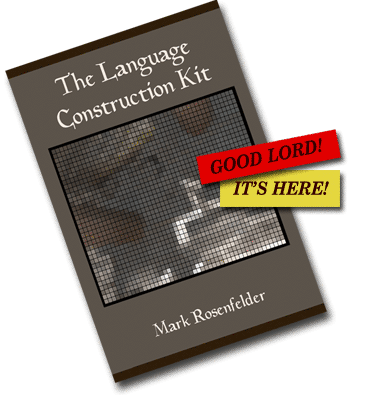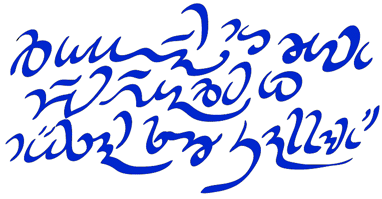

|
 Caja de herramientas para construir idiomas (en español; traducido por Renato Montes)
Caja de herramientas para construir idiomas (en español; traducido por Renato Montes)
 O Kit de Construção de Línguas (em português; traduzido por Gustavo Pereira)
O Kit de Construção de Línguas (em português; traduzido por Gustavo Pereira)
 Il Kit di Costruzione di Linguaggi (in italiano; tradotto per Daniele "MadMage" Calisi)
Il Kit di Costruzione di Linguaggi (in italiano; tradotto per Daniele "MadMage" Calisi)
 Der Sprachbaukasten (auf Deutsch; übersetzt von Carsten Becker)
Der Sprachbaukasten (auf Deutsch; übersetzt von Carsten Becker)

|
The LCK is also available in a print edition, four times the length, published by Yonagu Books on Amazon. When you're done with that, you’ll want Advanced Language Construction! Does the LCK seem pretty basic to you, and you want to delve into morphosyntax, logographic languages, predicate logic, and more? Get the sequel today! Next is The Conlanger’s Lexipedia: everything you know to create words that aren’t a simple copy of English. Creating the lexicon is the part of conlanging that takes the most time and requires the most real-world knowledge; you need this book to help. My latest book is The Syntax Construction Kit: all about modern Syntax, from Chomsky and many others. A deep dive into how language works, with an excursus into computer generation of languages.
|
|
This set of webpages (what’s a set of webpages? a webchapter?) is intended for anyone who wants to create artificial languages— for a fantasy or an alien world, as a hobby, as an interlanguage. It presents linguistically sound methods for creating naturalistic languages— which can be reversed to create non-naturalistic languages. It suggests further reading for those who want to know more, and shortcuts for those who want to know less.
—Mark Rosenfelder

The above is a sample of an artificial language of my own, Verdurian. If you’re curious, it reads Ďitelán mu cum pén veaďen er mësan so Sannam, meaning “Go forth in peace to love and serve the Lord.” The accented Ď sounds like the th in then; the vowels should be pronounced more or less as in Spanish. Here’s a recording of Joseph Fatula reading it.
How about a suite of webpages? Does that sound better?
Chico: OK, you’re the Swede of Webpages, an’ I’ll be the Mexican of Usenet.
Before I could write this little inscription I had to:
You may have two reactions to this:
The order of the steps above is significant. Working backwards (e.g. creating a text and then devising a grammar to match) will lead to an inconsistent if not incoherent work. A bad example is Hergé’s Syldavian; since he basically made it up in pieces, as he needed it, it’s impossible to create a consistent phonology or morphology for it, based on the scraps of the language provided in the Tintin books. (This didn’t prevent me from coming up with my best attempt at a Syldavian grammar.) |
The basics: models, sounds, writing systems, and word building. |  |
The grammar: Morphology and syntax, plus a glimpse at style and language families. |  |
Writing it down: Tips on going from a blank page to a full reference grammar. |

There’s a list of web resources here.
And for plenty more information, check out the print version!
Once you’re ready to create entire worlds, check out the Planet Construction Kit.
